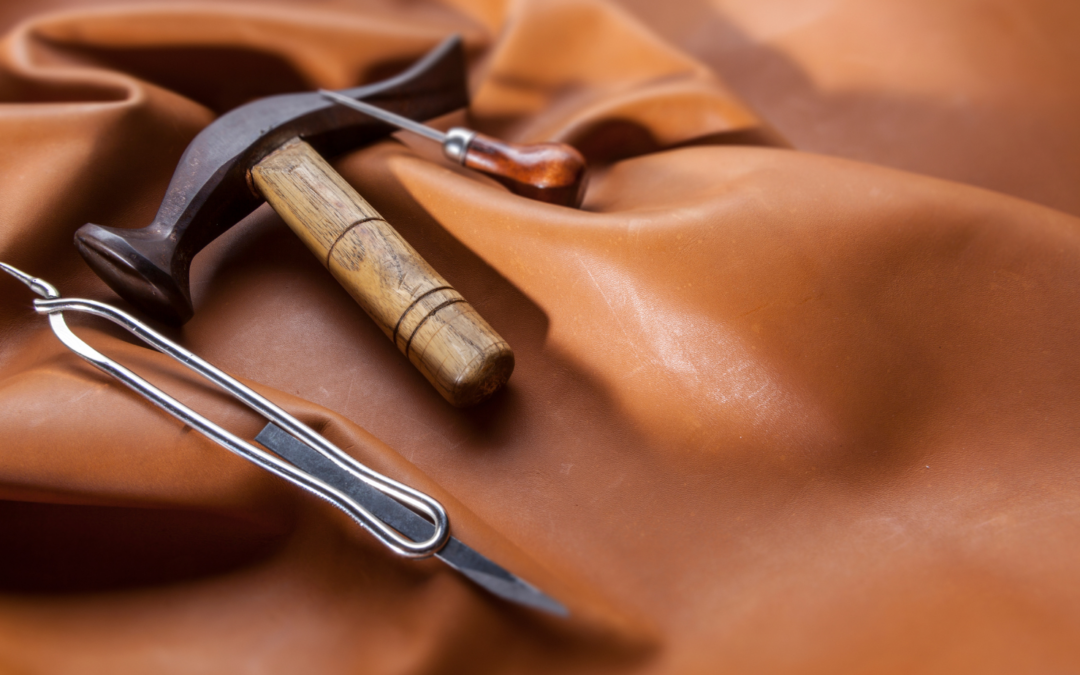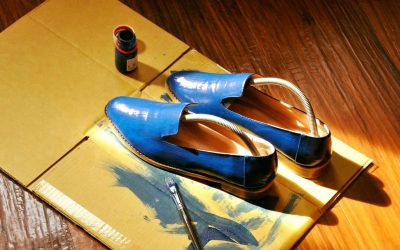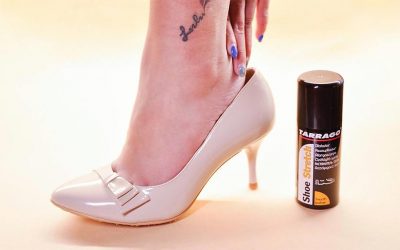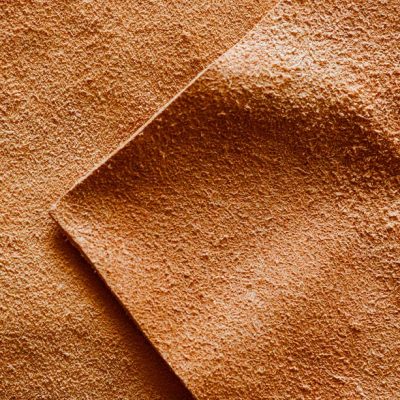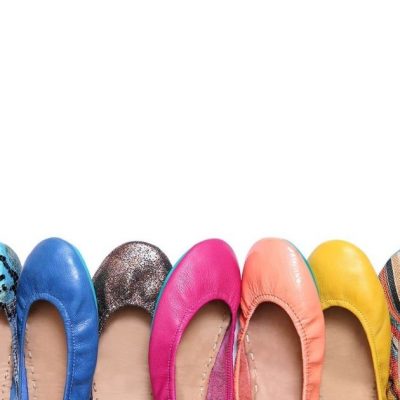At Tarrago Brands, we use a lot of leather-related terminology. For this reason, we have developed a brief glossary that brings together the main concepts from the world of leather.
A
Aniline: A type of leather dyed with transparent dyes, leaving the grain and natural marks visible. Aniline leather is known for its softness, flexibility, and natural look.
Alcohol-based: Alcohol-based products are those that contain solvents in their formulation. They evaporate more quickly. In the case of alcohol-based dyes, they cannot be removed once applied.
B
Buffing: A process consisting of lightly sanding the surface of leather to remove imperfections or stains. Buffing helps improve the look and texture of leather.
Burnishing: A finishing technique consisting of rubbing the edges of the leather to smooth and polish them. Burnishing can help improve durability and the look of leather goods.
C
Conditioning: A finishing process in which the leather is treated with oils, waxes, or other substances to improve its texture and appearance.
Cordwain: Term used to describe high-quality leather made from goat or sheep hide. Cordwain leather is known for its durability and flexibility and is often used for luxury leather goods.
D
Dyeing: The process of coloring leather using dyes or pigments. It can be carried out through different techniques and can significantly affect the quality and look of leather goods. There are dyes with an alcohol (or solvent) base or a water base.
Dye transfer: The transfer of dye from leather to other materials or surfaces, often caused by friction or moisture. Dye transfer can be avoided by using proper finishing and dyeing techniques.
E
Edge binding: Leatherworking technique used to smooth and finish the edges of a leather piece. Edge binding helps prevent fraying and gives leather goods a more polished appearance.
Engraving: Technique used to create decorative designs or patterns on leather by cutting or etching the surface. Engraving can add texture and visual interest to leather goods.
F
Finish: Coating or treatment applied to the surface of the hide to improve its appearance, durability, and water resistance. Finishes can be matte, glossy, or semi-gloss.
Full-grain leather: Leather that has not been sanded, buffed, or corrected in any way, preserving its natural grain and texture. Full-grain leather is the highest quality and most durable type.
G
Glossy finish: A type of finish applied to the surface of the hide that gives it a shiny, reflective appearance. Glossy finishes are often used in the production of elegant or formal leather items, such as shoes, handbags, and fashion accessories.
L
(leather) Aged: Leather that has been artificially aged to create a worn or vintage look. Aged leather is commonly used in fashion items such as jackets, handbags, and belts.
(leather) Crust: Tanned hide that has not yet been finished or colored. Crust leather can be dyed or finished to meet specific manufacturing needs.
(leather) Eco: Leather produced using environmentally friendly methods and materials. The production of eco leather helps reduce waste and pollution associated with the leather industry.
(leather) Exotic: Leather obtained from uncommon or rare animals, such as snakes, alligators, or ostriches. Exotic leather is highly valued for its unique appearance and texture and is often used in high-end fashion leather goods.
(leather) Faux: A type of synthetic material designed to have the look and feel of leather. Faux leather can be made from various materials, such as PVC and polyurethane.
(leather) Microfiber: A synthetic leather alternative made from ultra-fine fibers. Microfiber leather is often used in the production of vegan and eco-friendly leather goods.
(leather) Natural: Leather tanned with natural materials such as tree bark and plant matter. Natural leather is often preferred by those concerned with the environmental impact of leather production.
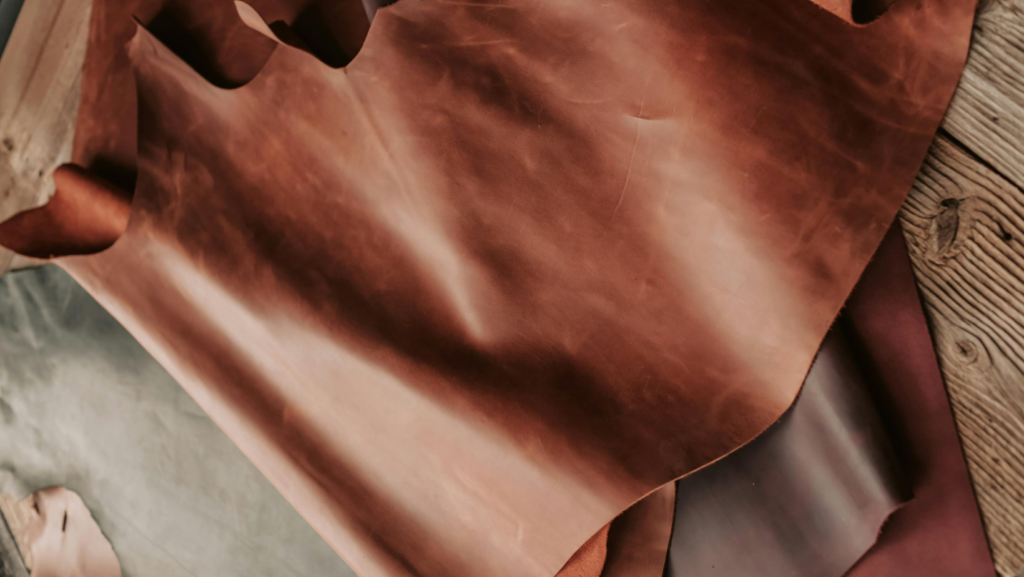
(leather) Nappa: A type of leather made from lamb or sheep hide. Nappa leather is known for its softness and fine grain and is often used in the production of luxury leather goods.
(leather) Oiled: A type of leather treated with a special fat or oil finish to give it a soft and flexible texture. Oiled leather is commonly used in the making of gloves and other accessories. In addition, the top layer of fat covering the leather provides waterproof protection.
(leather) Oiled nubuck: A variant of nubuck that has been treated with oils or fats to make it more resistant to water and dirt. This treatment gives it a darker look and a more greasy feel, while also improving its durability, making it commonly used in footwear and leather goods intended for heavier use.
(leather) Open-pore: Leather that has been treated to leave the surface pores open. Open-pore leather is often used in the production of high-end leather goods, such as jackets and handbags.
(leather) Patent: A type of leather that has been treated with a high-gloss finish. Patent leather is often used in the making of formal shoes and handbags.
(leather) Reversed: A type of leather processed with the grain side turned inward, creating a unique texture and look. Reversed leather is often used in high-end leather goods such as handbags and wallets.
(leather) Smooth: extracted from the skin of animals such as cows, sheep, goats, or lambs. It is a polished or treated surface that is uniform, without texture or relief.
(leather) Split: Split leather is the inner part of the hide obtained by separating the grain or top layer. It has a velvety suede-like texture, which is the result of sanding its surface. It is flexible and economical, although less resistant and durable than full-grain leather. This type of leather is often used for sturdy leather goods, such as belts and saddles.
(leather) Stretch: A type of leather treated with a special finish that gives it elasticity and flexibility. Stretch leather is commonly used in footwear and other applications requiring flexibility.
(leather) Suede: A type of leather obtained from deer hide or other game animals. Suede is known for its softness and durability, and is often used for gloves, clothing, and other high-end leather goods.
(leather) Synthetic: An artificial material that mimics the appearance and texture of natural leather. It is manufactured by applying a layer of plastic (PU or PVC) to a textile base, such as polyester or cotton. It is more economical, uniform, and easy to clean, although less breathable and durable than genuine leather.
(leather) Vegan: A synthetic material designed to mimic the appearance and texture of leather but without the use of animal products. It can be made from polyurethane, PVC, or more sustainable plant-based fibers (pineapple, cactus, apple, among others). Vegan leather is valued for its ethical character and lower environmental impact compared to traditional leather.
Leathercraft: The practice of working with leather to create various products, such as garments, footwear, and accessories. Leathercraft can involve various techniques such as cutting, stitching, and dyeing.
Leather grain: The pattern of natural fibers on the leather surface. Leather can have different grain patterns, such as pebble grain or smooth grain, which can affect its look and texture.
M
Matte finish: A type of finish used on leather that gives it a non-reflective look. Matte finishes are often used in the production of casual or vintage-style leather goods.
N
Non-woven fabric: A type of fabric, both natural and synthetic, used in the manufacturing of leather goods, such as handbags and wallets. Nonwoven fabric is made by bonding fibers with heat or adhesive, creating a strong and durable material.
Nubuck: A type of leather whose surface has been sanded to create a velvety texture. Nubuck leather is known for its softness and is often used in the production of high-end fashion accessories.
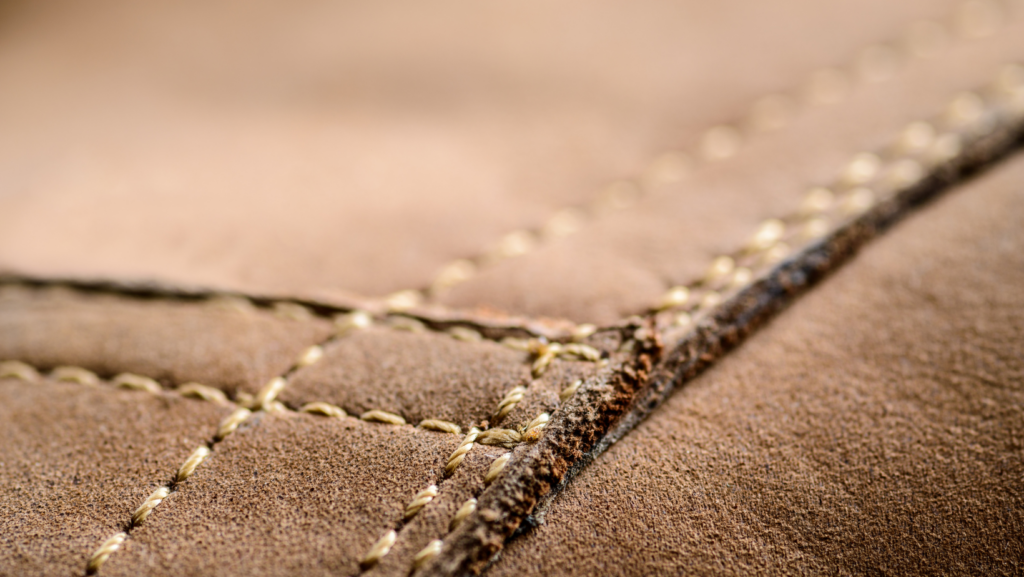
P
Perforated leather: Leather that has been perforated with small holes or patterns. Perforated leather is often used in leather upholstery such as car seats and furniture.
Preparer: A chemical product that opens the pores of the leather, cleaning and removing the surface layer of the leather, such as waxes, oils, dyes, or old finishes. Its function is to prepare the surface so that new dyes, paints, or finishes adhere properly.
T
Tannin: A natural substance found in certain plants, used in the vegetable tanning process to transform animal hides into leather.
(tanning) Chrome: This process is carried out with mineral agents and produces a more flexible, durable, and resistant leather. It also allows for dyeing in a single process with a wide variety of colors.
(tanning) Leather: The process of treating animal hides with chemicals to convert them into leather. Tanning can involve various techniques, such as vegetable tanning and chrome tanning, and can significantly impact the quality and properties of leather.
(tanning) Vegetable: This is an older, manual process that uses bark and extracts from oak, chestnut, or other species, as well as natural pigments and tannins. The finish is stiffer and better preserves the natural appearance of the leather. In addition, the variety of colors that can be used for dyeing is more limited.
Technical membranes: High-tech membranes are thin, technical sheets that are incorporated into fabrics to improve their performance (waterproofing, breathability, windproofing, etc.). They are made from synthetic materials such as polyurethane (PU) or polytetrafluoroethylene (PTFE) and act as a functional barrier within or on top of the fabric.
W
Water-based: The formula for water-based products is free of solvents and harmful agents. Generally, these are more natural products that contain softening agents. They are less aggressive and maintain the flexibility of the leather, but the drying time is much longer. In the case of dyes, they may rub off once applied.
